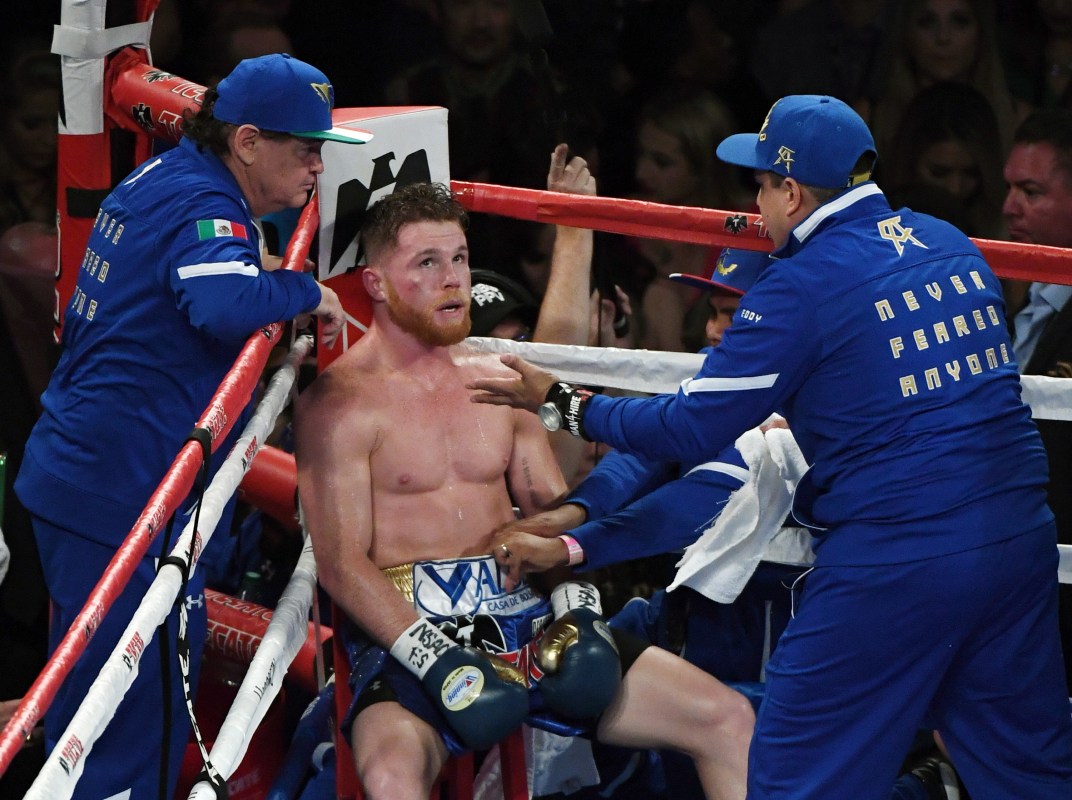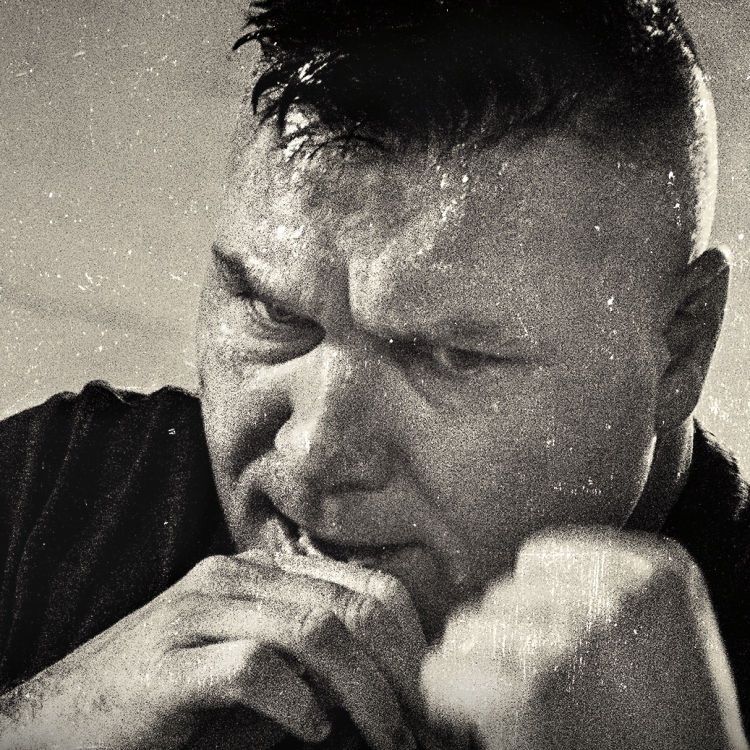Just 27, Saul “Canelo” Alvarez has already fought 52 times as a pro. (This is more than boxers including Rocky Marciano, “Sugar” Ray Leonard and Floyd Mayweather did during their entire careers.) 49 of them, he won. His most recent bout was a draw against Gennady Golovkin, but even that could be viewed as a triumph. After all, Canelo-GGG I was a PPV hit and the second stood to be even bigger.
Except Canelo twice tested positive for Clenbuterol, throwing the rematch in doubt. He then pulled the plug entirely, withdrawing before he could be suspended. Canelo insists this is all an innocent misunderstanding caused by eating tainted meat. (Clenbuterol is allowed in cattle feed in Mexico to reduce fat and boost lean muscle, though not in the United States.) Golovkin, however, feels that repeated rule breaking by Canelo is, at last, being exposed: “Before the first fight, I knew he was not clean.”
Whatever the case, it’s all part of boxing’s rich tradition of fighting dirty. Here’s a brief guide to the dark side of the ring.
Low Blows
Noted Practitioner: Andrew “The Foul Pole” Golota
Golota stands 6’4″. Riddick Bowe is 6’5″. Tall as these heavyweights are, they’ll always be remembered for two 1996 bouts that constantly drifted below the belt. By all accounts, Golota dominated Bowe each time. Yet the Polish fighter earned the nickname “The Foul Pole” as he repeatedly dished out low blows, including a terrifying three-punch combination to Bowe’s lower-regions. (These antics triggered a riot after the first fight and led Golota’s own trainer to denounce him after the second.) Golota lost both halves of the doubleheader by disqualification. Unsurprisingly, neither fighter was really the same again.
Rabbit Punching
Noted Practitioner: Jack “Kid Blackie” Dempsey
Low blows take an undeniable toll on your opponent, but they’re hard for referees to miss. Anyone who continually employs them will likely wind up DQ’ed like Golota. Quick punches to the back of an opponent’s head or neck are also illegal, but far easier to conceal. (Particularly if the boxers are grabbing each other and the ref is focused on separating them.) They are also extremely dangerous since they can damage the spinal cord. The legendarily merciless heavyweight champ Jack Dempsey was a master of the tactic. Dempsey famously never went easy on an opponent—when he stepped in the ring with the sportswriter Paul Gallico for what seemed a good-natured exhibition, Dempsey knocked him out within two minutes. (Gallico went on to abandon sportswriting for novels and produced The Poseidon Adventure.)
Lacing
Noted Practitioner: Dempsey again
Sometimes you don’t need to hit an opponent to hurt them. Before every fight, a boxer laces up the gloves. Some boxers then turn these laces into a weapon. During the fight, a conscious decision is made to drag the laces across an opponent’s face. This can be particularly damaging on cuts and eyes. Once more, Dempsey excelled. After he retired, the Manassa Mauler shared some of his techniques with America’s fighting men through the book How to Fight Tough, intended as a training guide for Coast Guardsmen when the United States entered World War II.
Headbutting
Noted Practitioner: Evander “The Real Deal” Holyfield
While Mike Tyson’s two ear bites are indefensible, he has argued he was provoked by the taller Holyfield intentionally headbutting him. If a fighter can get away with a headbutt, it has the potential to open deep cuts in a fighter’s forehead which bleed into his eyes, stopping the fight. (Cuts over the eyes jeopardize a fighter’s entire career—if they don’t fully heal, he fights knowing one punch can reopen them, get blood in his eyes and cause him to be disqualified.) Holyfield has always denied headbutting Tyson, but conceded he delivered a brutal ‘butt to Hasim Rahman, causing a hematoma on Rahman’s forehead that seems more appropriate in a sci-fi film than a boxing ring.
Padding Removal
Noted Practitioner: Luis Resto
Padding in boxing gloves serves two purposes. First, it protects a fighter’s hands. Second, it protects his opponent in general. This was never more evident than in 1983 bout between Luis Resto and Billy Collins. Before the bout, trainer Panama Lewis removed padding from Resto’s gloves. The result was Collins’ punches had the usual cushioning, but Resto was pummeling Collins bare-knuckled. (Indeed, it may have been even more brutal than that, as will be explained in the next item.) Collins was beaten so severely his career was ended. Less than a year later, he died in a drunk driving accident.
Plaster of Paris
Noted Practitioner: Antonio “The Tijuana Tornado” Margarito
This is both ingenious and horrifying. If officials and an opponent’s trainer aren’t vigilant, plaster of Paris can be mixed in with the hand wraps. As the fighter sweats, this causes the plaster to harden within a boxer’s gloves. Suddenly, he has hands of concrete. Margarito was caught doing this before fighting Shane Mosley, causing a close examination of his earlier career. In particular, it brought attention to his savage 11th round knockout of Miguel Cotto in 2008. Post-scandal, they rematched. This time, Cotto beat Margarito senseless, stopping him in the 10th.
Fight Fixing
Noted Practitioner: Jake “The Raging Bull” LaMotta
Before becoming the executive director of the Nevada Athletic Commission—where he became a central figure in the Canelo controversy—Bob Bennett worked as an FBI agent. He told RCL he had never encountered a case of a judge taking a payoff. However, during his time with the FBI he discovered that “fighters were receiving cash for losing on purpose to advance the career of another fighter.” (Which makes sense—even if you pay off judges, there’s a chance your fighter could get knocked out before it reaches the cards. Best to go straight to the other guy in gloves.) This occurred with the celebrated middleweight Jake LaMotta. He had to agree to throw a fight against Billy Fox in 1947 before the mob would give him a title shot. As shown in the film Raging Bull, the proud, self-destructive LaMotta proceeded to “lose” in spectacularly unconvincing fashion, nearly knocking out Fox by accident.
The IV
Noted Practitioner: Floyd “Money” Mayweather
Granted, this isn’t “cheating” so much as “concealing cheating.” An IV is deeply useful for a fighter struggling with a weight cut. If you need to starve and dehydrate yourself down to nothing to make the weight, the IV is a quick way to restore fluids while scrambling to get back into functional shape by the time you step in the ring. Still, it’s banned before fights for a reason: IV infusions can mask other forbidden substances. After the Pacquiao-Mayweather fight, it was discovered Mayweather had used an IV in his own home the night before the bout. This was incredibly suspicious for a number of reasons. For one, Mayweather essentially fights at his normal weight. (Fighters easily can balloon up 20 pounds between weigh-in and entering the ring, but Mayweather’s size goes largely unchanged.) Things got even shadier when it was revealed Mayweather had a waiver to use the IV… that he received weeks after the fight. At a minimum, using an IV when the other guy can’t enables you to rehydrate faster than your opponent. More damningly, it’s a gateway to a whole new level of cheating.
Doping
Noted Practitioner: “Sugar” Shane Mosley
“We are in the hurt business,” Bennett told RCL. “People don’t like to put it that way, but we are.” Doping has the potential to transform a solid fighter into a lethal machine. Mosley has acknowledged taking the BALCO steroids “the clear” and “the cream.” (BALCO achieved notoriety for their involvement with athletes including Barry Bonds—it should be noted Mosley insisted he only used them for a few weeks in 2003, didn’t understand what he was taking and saw no evidence they improved his performance.)
Potential benefits from using banned drugs include (but are by no means limited to):
–Easier weight cuts. This is where Canelo fits in the picture. Essentially, it’s a shortcut to dropping fat while maintaining muscle as a fighter makes weight. (How plausible is Canelo’s tainted meat excuse? Dr. David Geier is the author of That’s Gotta Hurt: The Injuries That Changes Sports Forever and spent a year working with the St. Louis Rams. He says strange things can happen, making it possible Canelo just ate something he shouldn’t have… but he also states the obvious: “Elite athletes usually know exactly what they are putting into their bodies in order to optimize performance, including medications, supplements and food.”)
–Added testosterone. Boxers busted for doping often display incredibly elevated testosterone levels. Testosterone therapy is a way to resist aging, with enhancements including boosted muscle mass and increased red blood cell production.
–Enhanced training. Quite simply, PEDs can enable an athlete to train harder than they would without them. Are they a substitute for hard work? Nope. Does it let you do things the poor bastard doing things naturally probably can’t? Absolutely.
It should be noted that Norwegian scientists have conducted research suggesting steroid use can continue to benefit athletes even after they’ve stopped using, suggesting it might be in a fighter’s interest to cheat and then go “clean.”
In general, it’s worth taking notice whenever a fighter continually moves up in weight without losing power. The great Roberto Duran was virtually invincible as a lightweight, beginning his career with a record of 71-1, with knockouts in 59 of those fights. (This includes twice taking out the fighter who gave him his only loss.) In higher weight classes, however, “Hands of Stone” only managed stoppages in 12 of 47 bouts. If Duran—who once knocked out a horse—couldn’t keep his power, it’s fair to wonder if a fighter maintaining or even enhancing theirs is getting some help on the side.
Taken altogether, cheating adds a whole lot of additional dangers to a competition that’s always risky. As “Smokin’” Joe Frazier put it: “Boxing is the only sport you can get your brain shook, your money took and your name in the undertaker book.”
And that’s when they do it clean.
Whether you’re looking to get into shape, or just get out of a funk, The Charge has got you covered. Sign up for our new wellness newsletter today.
























